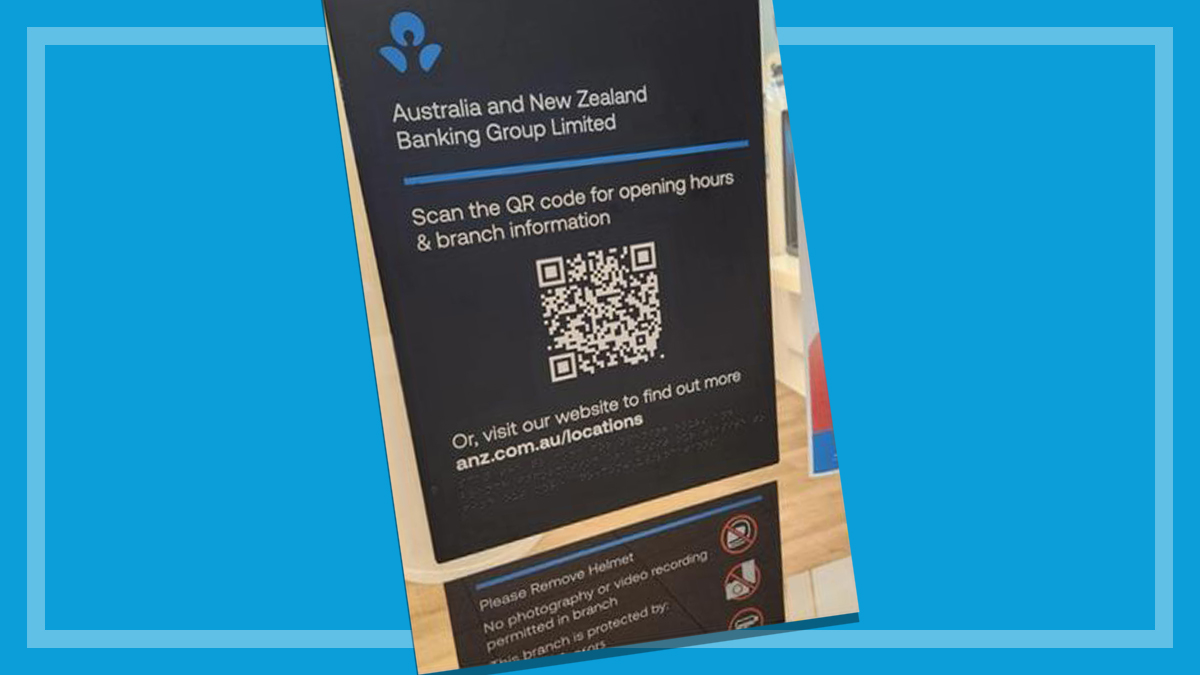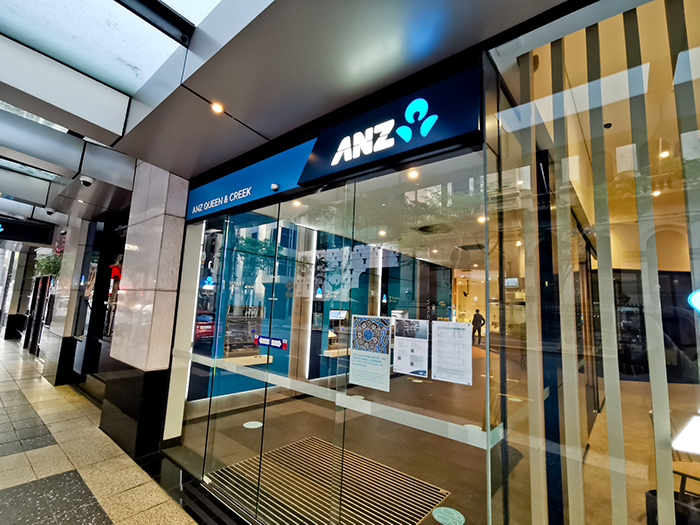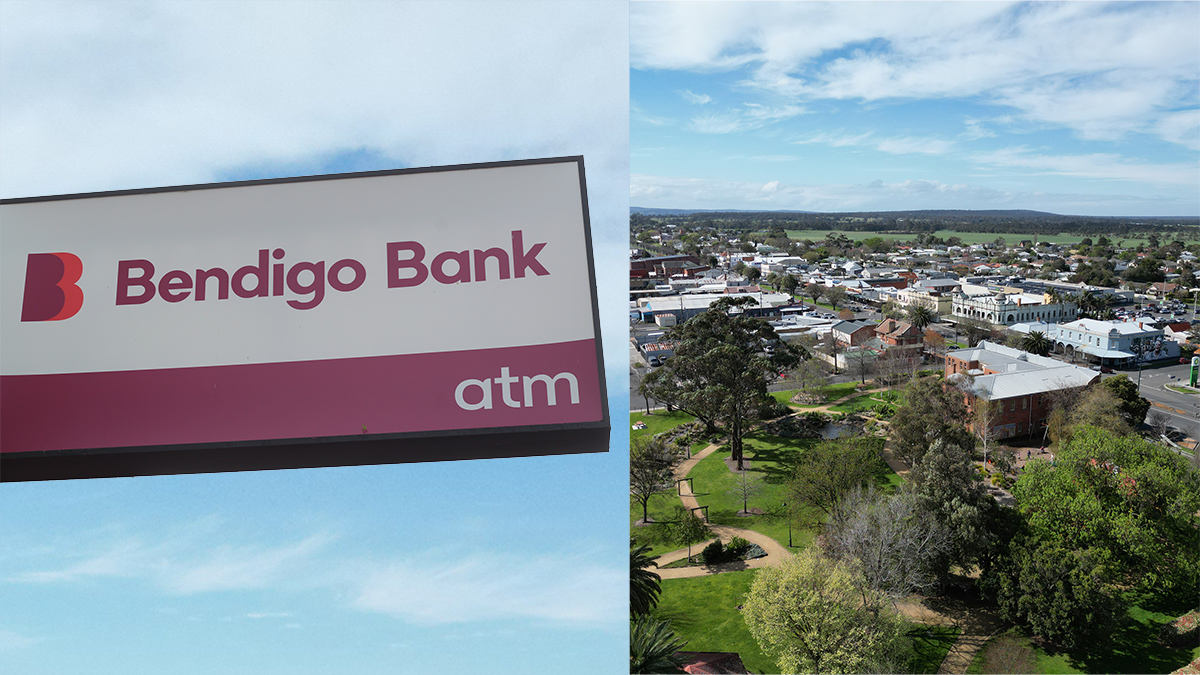Get our independent lab tests, expert reviews and honest advice.
ANZ Bank’s QR code rollout is leaving people behind

Need to know
- In recent years ANZ Bank started replacing opening hours signs on bank windows with exterior placards featuring QR codes
- Customers are required to scan the code to find out when the branch opens and closes
- Advocates for First Nations communities and older Australians say the ongoing phasing out of bank branch services adversely affects these groups
The phasing out of bank branches across Australia has not been easy for people who can’t manage their money without them.
In earlier reporting, CHOICE revealed that there were 575 bank branch closures between 2017 and 2021, a period in which more than a third of ATMs in rural areas were also shut down.
In March 2024, Bankwest announced it was closing all 60 of its branches in WA and taking away its ATMs.
Last month, CHOICE reported on the dire impacts of Westpac’s branch closure in Tenant Creek, a move that happened without warning and apparently without consideration for people who live there.
There have also been more subtle cost-cutting measures.
There were 575 bank branch closures between 2017 and 2021, a period in which more than a third of ATMs in rural areas were also shut down
In recent years, for instance, ANZ Bank started replacing opening hours signs on bank windows with big placards. These exterior signs feature QR codes, which customers are required to scan to find out when the branch opens and closes. The process is ongoing, and advocates for First Nations communities and senior Australians – groups that will be adversely affected – say it’s yet another example of an industry that’s tone deaf to the needs of these customers.
We asked ANZ whether the goal was to reduce in-person banking hours and were told, cryptically, that “from time to time we may change our branch opening hours, as we wish to ensure our staff can be available when they’re needed most”.
‘Assumed affordability’
Bettina Cooper, a senior financial counsellor at the First Nations advocacy organisation Mob Strong, tells CHOICE that ANZ’s continuing shift from signage to QR codes has occurred without consultation with such organisations.
“Face-to-face banking is relied upon by not just First Nations people, but by people who have low literacy or who are elderly and are digitally excluded, or people with disabilities where that digital divide is just so wide,” Cooper says.
Face-to-face banking is relied upon by not just First Nations people, but by people who have low literacy or who are elderly and are digitally excluded, or people with disabilities
Mob Strong senior financial counsellor Bettina Cooper
The banking industry’s forced march to digitalisation appears to be fueled by the erroneous assumption that everyone has access to digital services.
“There’s an expectation that you have one phone per person and that it’s working and that you can use it to do these activities,” Cooper says. “But if you’re on Centrelink payments or you’re relying solely on the age pension, you can’t necessarily afford a phone per person, maybe just a phone per family. And if you’re on JobSeeker payments, there is absolutely no way.
“So now, after you’ve travelled a long distance to go to a branch, you’ve got to pull out a phone and scan a QR code. There’s a lot of assumed affordability and there’s a lot of assumed access.”

‘It’s all they’ve known’
National Seniors Australia CEO Chris Grice tells CHOICE that bank branch closures continue to wreak havoc for people in regional and rural communities who can’t travel to a branch that’s still open.
“Many people still rely on traditional face-to-face banking services because it’s all they’ve known and it’s the only way to manage certain banking issues,” Grice says.
The impacts of bank closures are far reaching and not always obvious
National Seniors Australia CEO Chris Grice
Another concern is that it’s much easier to detect instances of financial elder abuse when talking to an actual person rather than grappling with the clicks and swipes of digital devices. “The impacts of bank closures are far reaching and not always obvious,” Grice says.
Concerns about QR scams
Then there’s the issue of scammers infiltrating virtually all forms of digital communication. Last year CHOICE reported on the growing problem of QR code scams in Australia, where scammers copy the look of genuine government or business QR codes and fool consumers into clicking on links that enable phishing scams.
The possibility of scanning a QR code at an ANZ branch that was planted by a scammer is all too real, Cooper says.
Who will be making sure that the QR code hasn’t been tampered with?
Mob Strong senior financial counsellor Bettina Copper
“Despite the education that we have tried to provide to banks about the risks of scams, here we are with ANZ bank with QR code stickers placed outside their branches, which are vulnerable to somebody else putting another QR code at the top of it. Who will be making sure that the QR code hasn’t been tampered with?”
Chris Grice agress, saying National Seniors “is always concerned about the vulnerability of older Australians when it comes to scams – and QR codes are no different, especially when there is no identifiable way to confirm its legitimacy”.
Widening the gap even more
We asked ANZ whether the bank had conducted impact studies on populations for whom using QR codes might be a problem, but didn’t receive an answer.
A spokesperson did tell us that it started introducing QR codes at branches in September 2023 “so customers can access the most up-to-date information about our trading hours”, and that remote branches will continue to have regular decal signs. Bettina Cooper, who’s a member of the Australian Banking Association’s Consumer Outcomes Group, says the move by ANZ is a symptom of a larger problem.
We’ve spoken to banks … about closing the gap for First Nations people in remote and regional areas in relation to banking access. And this is just widening the gap
Mob Strong senior financial counsellor Bettina Cooper
“I was not aware that there was this change happening with QR codes for opening hours at ANZ. I was surprised when I first heard about it, and I was disappointed. Because we’ve spoken to banks through submissions and through media and through consultation, talking about closing the gap for First Nations people in remote and regional areas in relation to banking access. And this is just widening the gap yet again.”
Grice says the decision to replace traditional signage with QR codes “turns what should be simply reading a sign to get information to a complex treasure hunt of links and clicks to get that same information. It’s unnecessary, time consuming, not customer friendly, and certainly not customer friendly for older people”.





